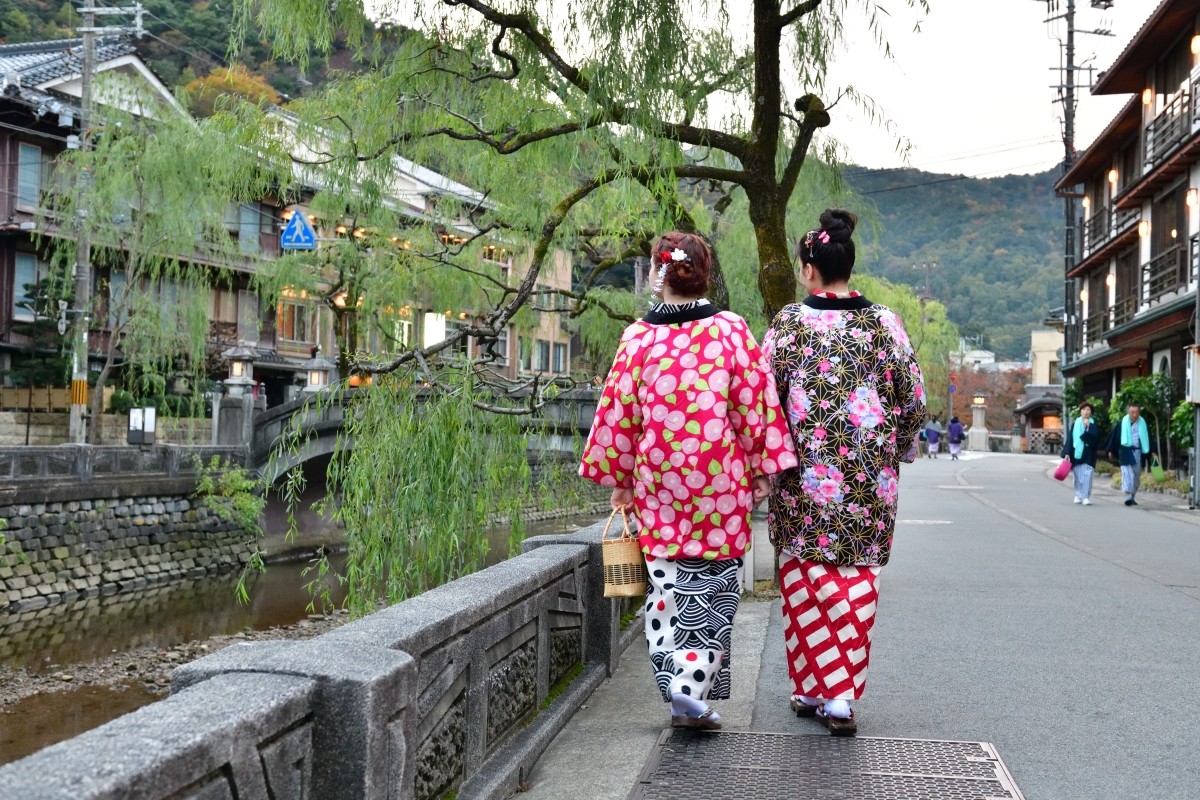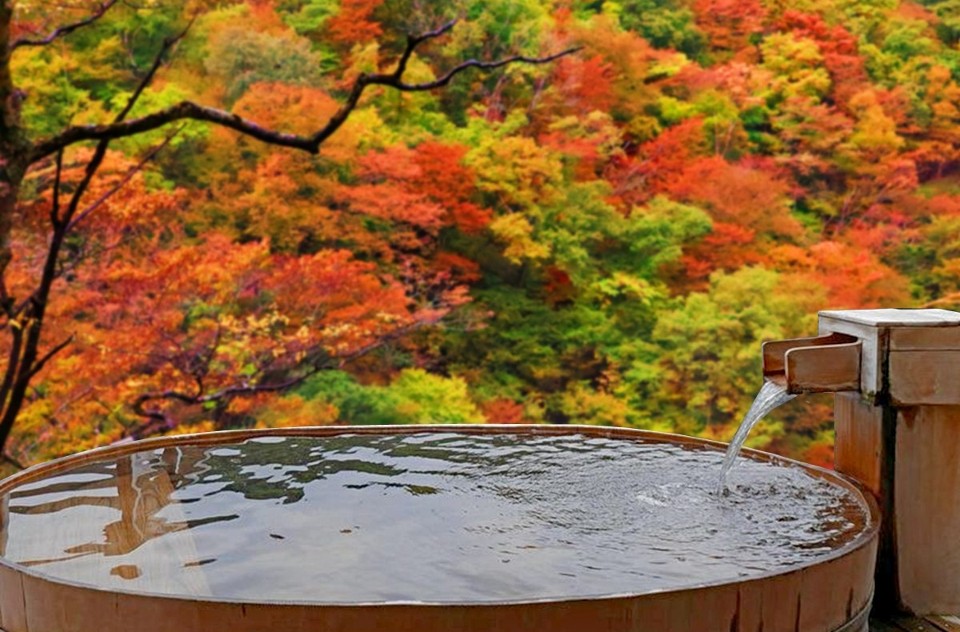
Japan is dotted with hot spring towns all over the country, and it is showing a lot of bustle. In addition to the historic hot springs called "Japan Sankosen (Japan Sankoyu)" (Dogo Onsen in Matsuyama City, Ehime Prefecture, Arima Onsen in Kobe City, Hyogo Prefecture, Shirahama Onsen in Shirahama Town in Wakayama Prefecture or Iwaki Yumoto Onsen in Iwaki City, Fukushima Prefecture), popular hot spring resorts have recently been introduced in ranking projects such as "100 Best Hot Springs in Japan" and "Hot Spring General Election" held every year, and each hot spring town is competing with each other. This time, we will introduce Japan's anniversary "Onsen Day", which was established for hot springs.
* If you purchase or book any products mentioned in this article, a portion of the sales may be returned to FUN! JAPAN.
What Exactly is an Onsen (Hot Spring)?

The definition of an "Onsen" is outlined in Japan’s "Onsen Law," established in 1948. According to this law, an "Onsen" is defined as "hot water, mineral water, steam, or gas (excluding natural gas with hydrocarbons as the main component) that comes from underground." The law also specifies the temperature and the substances that must be present for a spring to be classified as an Onsen. The Ministry of the Environment's 2022 report on Onsen usage states that there are 2,879 hot spring areas across Japan that include accommodations. Hokkaido has the most, with 230 Onsen locations.
Cultural Representation of Onsen: Onsen in Japanese Literature Before diving into the origins of "Onsen Day," let's explore how the concept of Onsen has been integrated into Japanese culture. Many literary works depict the enchanting atmosphere of hot springs, offering a glimpse into their timeless allure.
Cultural Representation of Onsen: Onsen in Japanese Literature
Before diving into the origins of "Onsen Day," let's explore how the concept of Onsen has been integrated into Japanese culture. Many literary works depict the enchanting atmosphere of hot springs, offering a glimpse into their timeless allure.
Natsume Soseki's "Bocchan" and Dogo Onsen

The first literary work we’d like to introduce is Botchan by the famous Japanese author Natsume Soseki. The story follows the main character, "Ore" (I), who becomes a math teacher at a middle school in Shikoku after graduating from school in Tokyo. In one passage, he vividly describes his daily visits to the local hot spring. Here’s an excerpt that captures his routine:
Since I arrived here, I’ve made it a habit to visit Sumida's hot spring every day. While nothing else around here compares to Tokyo, the hot spring is truly remarkable. Since I’ve come all this way, I decided to bathe every day, so I head out before dinner for some exercise. I always carry a large Western-style towel with me. After soaking in the hot water, the red stripes on the towel bleed, making it appear pink. The bath is made of granite and is about fifteen tatami mats in size. There are usually thirteen or fourteen people bathing, but sometimes it’s empty. The water is chest-deep, making it quite enjoyable to swim for exercise. Whenever I found the bath empty, I’d swim around the large bath and take delight in it. However, one day, when I eagerly rushed down from the third floor to swim again, I found a large sign that read, 'Swimming in the bath is prohibited.' Since not many people swim in the bath, they must have made this sign just for me. After that, I gave up swimming (Bocchan, Iwanami Shoten, 1929, pp. 33-34)
The "Sumita hot spring" mentioned here is believed to be modeled after Dogo Onsen in Matsuyama, Ehime Prefecture. At the Dogo Onsen Honkan, the room Soseki is said to have used is preserved as the "Botchan Room." Additionally, the original towels sold at the bathhouse feature a red design, and a wooden sign in the men's bath of "Kami no Yu" reads "Swimming is Prohibited," in reference to Botchan. These literary touches make Dogo Onsen a must-visit spot for fans of Japanese literature.
Naoya Shiga's "At Kinosaki" and Kinosaki Onsen

Next, we introduce a famous literary work not just featuring an episode set in a hot spring town but one where the entire story is centered around it—At Kinosaki by the novelist Naoya Shiga. This short story is so well-known in Japan that it is even included in school textbooks. The story begins with the following lines:
I was injured when I was hit by a Yamanote Line train. Afterward, I decided to recuperate alone at Kinosaki Onsen in Tajima. The doctor had told me that while my back injury could potentially lead to a fatal spinal infection, it was unlikely. He said that if nothing happened in the next two or three years, I should have nothing to worry about. But to be safe, he recommended that I take care, so I came here. I intended to stay for at least three weeks—maybe even five if I could manage it. (At the Castle of Saki, Kadokawa Shoten, 1954, p. 49)
The protagonist, who suffered a serious injury in a train accident, goes to Kinosaki Onsen, located in what is now Toyooka City, Hyogo Prefecture. During his stay, he witnesses the life and death of various small animals. He sees the quiet death of a wasp lying near its nest, a mouse struggling desperately after being thrown into the river, and a newt accidentally killed by a stone the protagonist threw. Observing these scenes, the protagonist reflects near the story’s end, "Living and dying are not as far apart as they seem. They are not such polar opposites." Though brief, this story is rich with quiet, deep insights. If you find this intriguing, I highly recommend giving it a read.
For those interested, the Mikuniya Inn at Kinosaki Onsen preserves a guest room said to have been used by Naoya Shiga, though not from the exact time of the story’s writing. Staying at this inn might offer a unique connection to the author and his work.
👉3-Day Pass: Kinosaki Onsen Attraction Pass | Japan
The Origins of "Onsen Day"

n Japan, September 9th has been designated as "Onsen Day," a day to celebrate the country’s beloved hot springs. This date was established by the town of Kokonoe, located in central-western Oita Prefecture. The town is home to nine hot springs, collectively known as the "Kokonoe Kuyu," which include Hosenji Onsen, Kabeyu Onsen, Kawasoko Onsen, Ryumon Onsen, Yutsubo Onsen, Sujiyu Onsen, Ukenokuchi Onsen, Choja-baru Onsen, and Kan-no-jigoku Onsen. The significance of the number nine in the name "Kokonoe Kuyu" is reflected in the choice of September 9th for "Onsen Day."
Interestingly, Japan has several other days dedicated to hot springs and baths, each with its own unique significance. For example, February 22nd is "Onsen Mark Day," because the three wavy lines in the traditional onsen symbol resemble the number "2" when viewed from the side. May 26th is "Gensen Kakenagashi Day" (a day celebrating hot springs with natural flowing water), based on the pun "Gokujō (5) na Furo (26)" (meaning "an excellent bath"). June 26th is "Rotenburo Day" (a day celebrating outdoor baths), inspired by the phonetic similarity of the numbers 6・26 with the sounds in "rotenburo." This wordplay, known as "goroawase," is a popular method in Japan for associating numbers with words and is often used to create memorable dates.
Events and Celebrations Related to Onsen Days

Many of the special days related to hot springs come with various events and promotions. For instance, on September 9th, which is "Onsen Day," you can enjoy a free bath at participating hot springs in Kokonoe, Oita Prefecture. This event is known as "Kokonoe 'Yume' Onsenkyo Free Bath Day," where facilities displaying the event poster offer free admission.

Additionally, on February 24th, 2024, the town of Isobe Onsen in Annaka City, Gunma Prefecture, will host the "7th Onsen Mark Origin Festival 2024" in celebration of "Onsen Mark Day" (February 22nd). Organized by the Isobe Onsen Association, this event features activities such as the "Isobe Senbei Saku-Saku Walk," where visitors can stroll through the town while sampling Isobe Senbei crackers, the "Onsen Mark Origin Jumbo Lottery" with a chance to win Onsen Mark-themed goods, and the distribution of "Free Onsen Admission Tickets" to the first 100 attendees.
Meanwhile, on June 26th, in honor of "Rotenburo Day," the town of Yubara Onsen in Maniwa City, Okayama Prefecture, will host the "38th 6.26 Rotenburo Day" in 2024. This event will include free admission to indoor baths, a bread market, and street performances.
In Conclusion: New Project Related to Onsen Culture
Before we wrap up, have you heard of the "Onsen Musume" project? This initiative was launched to promote the charm of Japan’s various hot spring towns and tourist spots both domestically and internationally through anime, manga, characters, voice actors, and other media. The project features fictional, goddess-like characters representing different onsen locations across Japan. For example, Dogo Onsen is represented by "Dogo Izumi," and Kinosaki Onsen by "Kinosaki Arisa." These characters are brought to life through comics, novels, animations, music, merchandise, and local events.
The designs of these characters are created by various talented artists, and their voices are provided by popular voice actors from anime and games. The official Onsen Musume website offers detailed information about each character, so if you’re planning a trip to an onsen or are a fan of anime and games, be sure to check it out. Following your favorite creators or voice actors to the onsen associated with their character could be a new and exciting way to enjoy these hot spring destinations.
Onsen Musume Official Website: https://onsen-musume.jp/




Comments